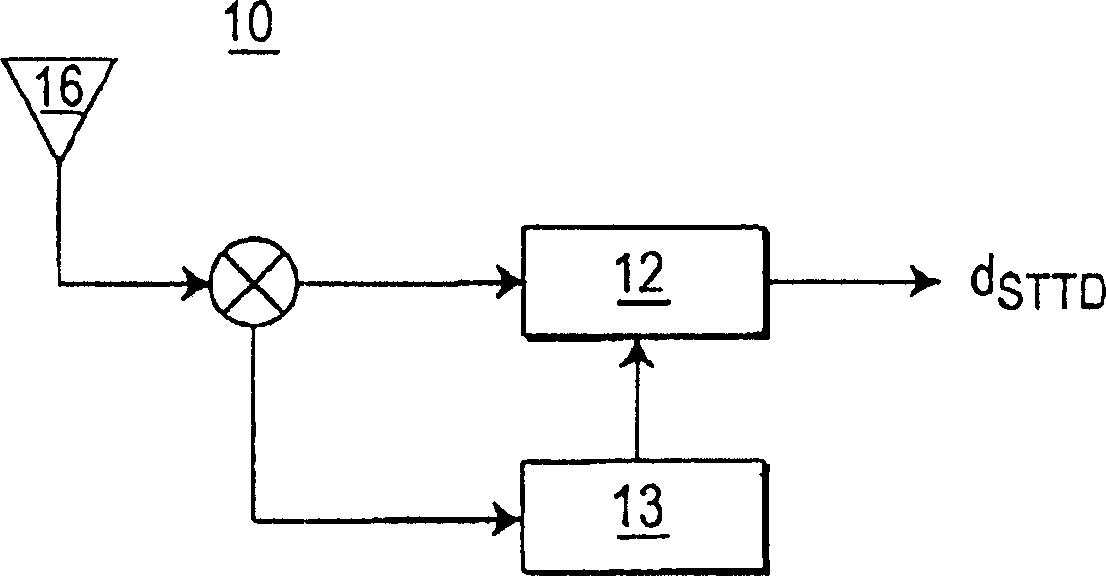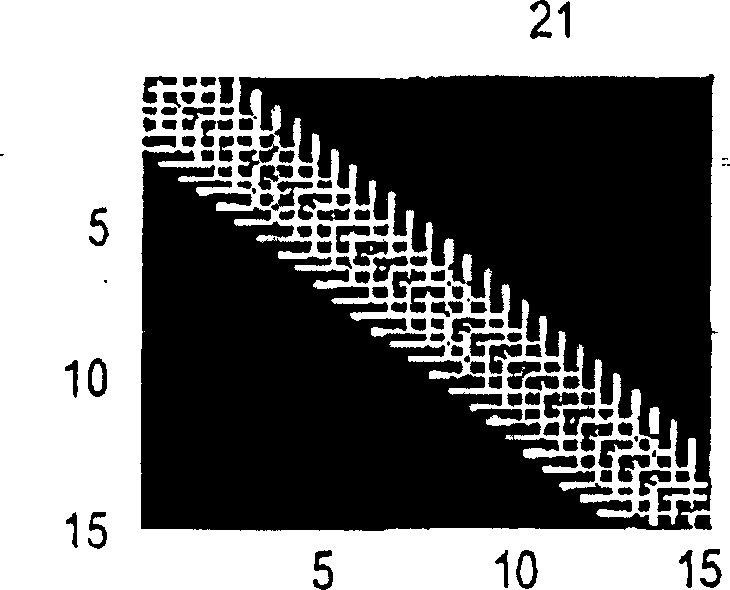Simplified block linear equalizer with block space time transmit diverstiy
A block and time technology, applied in the field of communication systems, can solve problems such as high receiver costs and high complexity
- Summary
- Abstract
- Description
- Claims
- Application Information
AI Technical Summary
Problems solved by technology
Method used
Image
Examples
Embodiment Construction
[0013] figure 2 It is a block diagram of a receiver 10 according to a preferred embodiment of the present invention, preferably located at a user terminal equipment (UE) in a CDMA communication system. Receiver 10 may be located at a base station and operate during uplink communication, although it is preferred to have the receiver located at the UE. The receiver 10 includes a BSTTD junction detection device (BSTTD JD) 12 , a channel estimation device 13 and an antenna 16 . The antenna 16 of the UE receives various radio frequency (RF) signals including a first and a second communication burst from a transmitter.
[0014] The first and second communication bursts include the first and second data fields respectively as described above. The first data field includes a first portion D1 and a second portion D2; the second data field includes a negative conjugate of D2 -D2* and a conjugate D1* of D1. A typical communication burst has two parts of the data field separated by a ...
PUM
 Login to View More
Login to View More Abstract
Description
Claims
Application Information
 Login to View More
Login to View More - R&D
- Intellectual Property
- Life Sciences
- Materials
- Tech Scout
- Unparalleled Data Quality
- Higher Quality Content
- 60% Fewer Hallucinations
Browse by: Latest US Patents, China's latest patents, Technical Efficacy Thesaurus, Application Domain, Technology Topic, Popular Technical Reports.
© 2025 PatSnap. All rights reserved.Legal|Privacy policy|Modern Slavery Act Transparency Statement|Sitemap|About US| Contact US: help@patsnap.com



